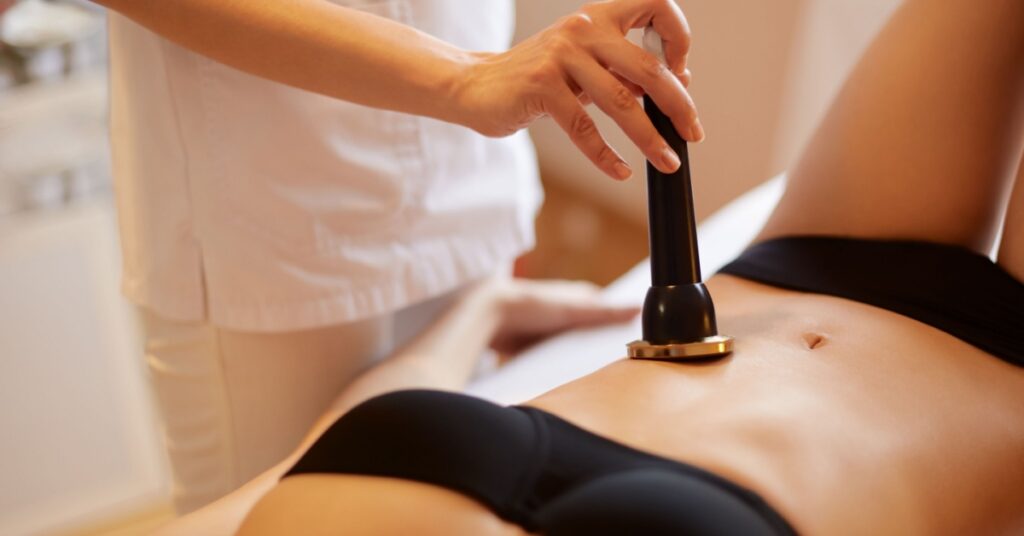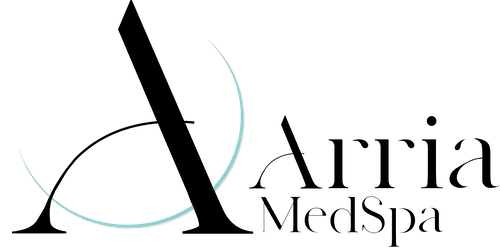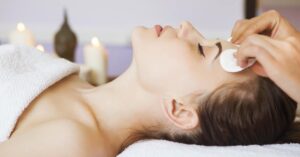Nonsurgical Approaches to Fat Reduction
Say Goodbye to Stubborn Fat: Nonsurgical Solutions for Targeted Reduction
Losing weight can be difficult and time-consuming. Even after months of dieting and exercise, many people find that certain pockets of fat remain stubbornly in place. Fortunately, nonsurgical approaches to fat reduction can help address these problem areas.
This “No Scalpel Needed: Nonsurgical Approaches to Fat Reduction” will delve into some widely favored nonsurgical methods for targeted fat reduction, including cryolipolysis, ultrasound, radiofrequency, and laser lipolysis.
Cryolipolysis: Freezing Fat Away
Cryolipolysis, commonly known as “CoolSculpting,” is a noninvasive fat reduction procedure that freezes targeted fat cells. The process entails utilizing a specialized apparatus that applies controlled cooling to the treated area. Over time, the targeted fat cells are eliminated through the body’s natural metabolic processes.
CoolSculpting is notably efficient for diminishing fat within areas challenging to target through diet and exercise alone, such as the abdomen, thighs, and love handles. The procedure is safe, FDA-approved, and requires little to no downtime.
How CoolSculpting Works
CoolSculpting functions by pinpointing and freezing fat cells in the treated area, inducing them to crystallize and perish. Over several weeks, the body naturally eliminates these dead fat cells, reducing the overall volume of fat in the area.
The CoolSculpting procedure typically takes one to two hours per treatment area, during which the patient can relax, read, or even nap. There is no need for downtime after the procedure; patients typically can resume their regular activities immediately.
Who is a Good Candidate for CoolSculpting?
CoolSculpting offers an excellent solution for individuals dealing with stubborn fat deposits unresponsive to traditional diet and exercise efforts. However, it’s important to note that it’s not intended as a weight loss remedy and is not advisable for individuals with significant overweight concerns.
The best candidates for CoolSculpting are those who are at or near their ideal body weight and have specific areas of concern, such as love handles, muffin tops, or a double chin, that they would like to address.
What to Expect During and After CoolSculpting
During the CoolSculpting procedure, patients may experience a cold sensation in the treatment area and some pressure or pulling. However, the procedure is generally painless, and patients can usually relax comfortably during the treatment.
Following the procedure, patients might encounter slight swelling, bruising, or redness in the treated area. These effects are usually mild and temporary; most patients can resume their usual activities without delay.
The effects of CoolSculpting treatment usually become noticeable within several weeks, with the best results becoming evident after two to three months. Patients may find that they need multiple sessions to attain their desired outcome.
Ultrasound: The Sound of Fat Reduction
Ultrasound technology has been used in the medical field for decades, but it has recently found a new application in aesthetics. Ultrasound-based fat reduction treatments utilize high-frequency sound waves to disrupt and eliminate fat cells in targeted areas.
This non-invasive procedure reduces fat in the abdomen, love handles, and thighs. It is painless, requires no downtime, and can provide noticeable results relatively quickly.
How Ultrasound Works
Ultrasound delivers high-frequency sound waves to the targeted area, disrupting and destroying fat cells. Over time, the body naturally removes these deceased fat cells, decreasing the overall fat volume in the area.
The procedure typically takes one to two hours per treatment area, and patients can usually return to their normal activities immediately afterward.
Typically, most patients need between three to six sessions to achieve the best possible results.
Who is a Good Candidate for Ultrasound?
Ultrasound is a beneficial choice for individuals with persistent pockets of fat impervious to diet and exercise. However, it’s important to note that it isn’t intended as a weight loss remedy and isn’t advisable for individuals grappling with significant overweight concerns.
The best candidates are those who are at or near their ideal body weight and have specific areas of concern, such as love handles, muffin tops, or a double chin, that they would like to address.
What to Expect During and After
Patients may experience a mild warming sensation during the procedure in the treatment area, but the procedure is generally painless and comfortable. After the procedure, patients may experience mild swelling or redness in the treatment area, but these side effects are typically mild and short-lived.
The effects of treatment usually become apparent within several weeks, with the best results becoming evident after two to three months. Patients may find that they need multiple sessions to attain their desired outcome.

Radiofrequency: Heating Fat Reduction
Radiofrequency (RF) technology is another nonsurgical method for fat reduction that has gained popularity in recent years. RF treatments use heat to destroy fat cells in targeted areas.
Radiofrequency is a noninvasive procedure for reducing fat in the abdomen, thighs, and love handles. It is safe, painless, and requires no recovery time. Unlike other nonsurgical fat reduction methods, it can treat larger areas of the body in a single session.
How Radiofrequency Works
Radiofrequency delivers energy to the targeted area, heating and destroying fat cells. Over time, the body naturally removes these deceased fat cells and gradually eliminates the overall fat volume in the area.
The procedure typically takes one to two hours per treatment area, and patients can usually return to their normal activities immediately afterward. However, most patients require three to six treatments to achieve optimal results.
Who is a Good Candidate?
Radiofrequency proves to be a favorable choice for individuals struggling with stubborn fat deposits who are unresponsive to diet and exercise. However, it’s essential to note that it isn’t intended as a weight loss solution and isn’t advisable for those dealing with significant overweight issues.
The best candidates are at or near their ideal body weight and have specific areas of concern, such as love handles, muffin tops, or a double chin, that they would like to address.
What to Expect During and After
During the procedure, patients may experience a mild warming sensation in the treatment area, but the procedure is generally painless and comfortable. After the procedure, patients may experience mild swelling or redness in the treatment area, but these side effects are typically mild and short-lived.
Treatment results usually become noticeable within several weeks, with the best results appearing after two to three months. Patients may need several sessions to reach their desired outcome.
Laser Lipolysis: The Power of Light
Laser lipolysis, or “laser lipo,” is a noninvasive fat reduction technique that uses laser energy to heat and destroy targeted fat cells. The procedure involves applying a specialized laser device to the area being treated.
Laser lipo is particularly effective for reducing fat in smaller, hard-to-target areas such as the chin and neck. The treatment is safe, requires no downtime, and can quickly provide noticeable results.
How Laser Lipolysis Works
Laser lipolysis delivers laser energy to the targeted area, heating and destroying fat cells. Over time, the body naturally expels these deceased fat cells, reducing the overall volume of fat in the area.
The laser lipolysis procedure typically takes one to two hours per treatment area, and patients commonly go back to their regular activities right after the procedure. However, most patients require three to six treatments to achieve optimal results.
Who is a Good Candidate for Laser Lipolysis?
Laser lipolysis is ideal for individuals grappling with localized fat deposits unyielding to traditional diet and exercise efforts. Nevertheless, it should be noted that it does not serve as a weight loss remedy and is not advisable for those dealing with substantial overweight issues.
The best candidates for laser lipolysis are those who are at or near their ideal body weight and have specific areas of concern, such as the chin or neck, that they would like to address.
What to Expect During and After Laser Lipolysis
Patients might feel a gentle warmth throughout the laser lipolysis procedure in the treatment area, but the procedure is generally painless and comfortable. After the procedure, patients may experience mild swelling or redness in the treatment area, but these side effects are typically mild and short-lived.
The outcomes of laser lipolysis usually become noticeable within several weeks, with the best results becoming apparent after two to three months. Patients may need several sessions to reach their desired outcome.
Achieving Your Ideal Body Contours
Nonsurgical approaches to fat reduction offer a safe, effective, and convenient alternative to traditional weight loss methods. Whether you target stubborn fat in your abdomen, thighs, or love handles, a nonsurgical solution can help you achieve your ideal physique.
At Arria MedSpa in Montclair, New Jersey, we offer a variety of nonsurgical fat reduction treatments to help you achieve your body goals. Our panel of healthcare specialists is adept at determining which treatment is proper for you based on your needs and goals. Contact us today to schedule a consultation and take the first step toward achieving your desired body.
If you are looking for a more invasive approach to fat reduction, click here to view our partner’s website, The Plastic Surgery Group, in Montclair, New Jersey.





